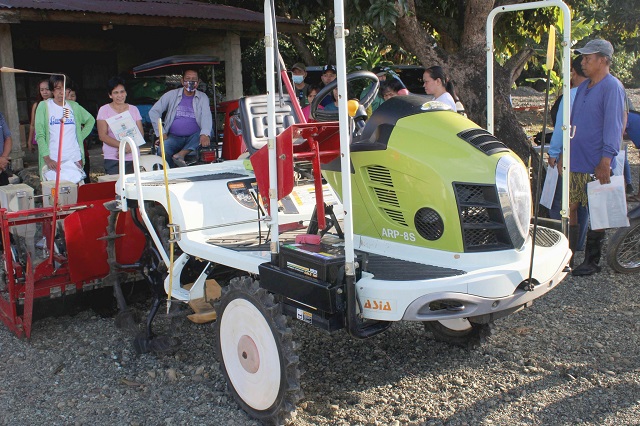
Zambales rice farmers expressed positive feedback on the use of direct seeding machineries such as plastic drum seeder and ride-on precision seeder shown in a field day and forum held in Sta. Cruz, Zambales, Sept. 19.
According to farmer Juanito Medida, he likes the plastic drum seeder’s precise depth and spacing.
With the use of drum seeder, rice grains are seeded in straight rows allowing mechanical weeding in between rows. It also helps save 50-80% seeds over broadcast seeding. It only uses 40-60kg/ha of seeds while usual farmers’ practice applies 120kg/ha.
Meanwhile, farmer Diosdado Movilla and Violeta Movilla of Guisguis, Sta. Cruz, Zambales were not disappointed with their first try of the precision seeder, a self-propelled and a ride-on type planting machine that accurately drops seeds at a precise depth and spacing.
Diosdado liked the machine’s feature of automatically building canals and of covering up the seeds, protecting them from birds.
“No more additional expenses because it automatically builds canal,” he said.
Violeta also said that the use of precision seeder helped cut their labor costs ranging P300 – P400 per person.
In association with Food and Agriculture Organization (FAO) and the local government of Zambales, Philippine Rice Research Institute (PhilRice) implements the project, “Building capacity on promoting economically and environmentally efficient rice production through direct-seeded rice,” which aims to strengthen the use of direct-seeding technologies.




